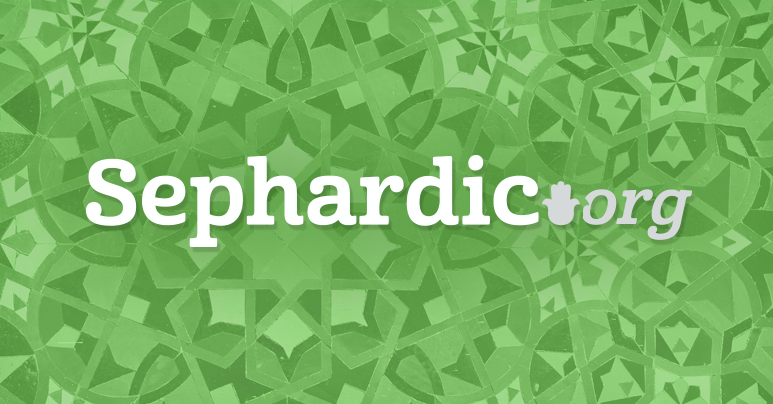
KORAH - MOSHE FALLS ON HIS FACE - THE SECRET OF NEFILAT APAYIM
Rashi cites the Midrash which answers the question as to why Moshe opts here to fall on his face rather than to pray on behalf of Korah and his assembly. Though it is true that Moshe and Aharon had previously fallen on their faces in their altercation with the spies- the Ramban explains there - that it was only to implore the people not to return to Egypt. 1 Here, however, the Midrash teaches that Moshe's hands were weakened to the extent that he was limited in his ability to offer a rectification of their transgression by means of prayer. His only option was to rectify the blemish via falling on his face. The Tanhuma reads, "Because of the dispute - as this was their fourth despicable act. They sinned with the Golden Calf - Moshe implored; With the complainers - Moshe prayed; With the Spies - Moshe said to God if Egypt should hear. At the Korah dispute however - Moshe's hands were weakened." 2 Evidently since this was the fourth despicable act of the people of Israel - Moshe was restricted from praying on their behalf but instead had to resort to falling on his face to effectuate a Tikun. Here, we are taught that the falling to the face was as a result of Moshe's hands being weakened in using the option of prayer. It behooves us to inquire as to the nature of this "falling on ones face in place of prayer" as well as why this becomes necessary only after the three other failings.
THE FOURTH SIN - CANNOT BE RECTIFIED AS EASILY AS THE FIRST THREE
Scripture often makes a distinction between three mishaps and a fourth. R. Me’ir Bukayyim references a verse from Iyov to hilite this point. "God will work with a man two or three times." He associates the initial three sins with respective mishaps in the three lower worlds of Asiya, Yesira and Beri’a. These can easily be rectified via prayer - since the sin did not reach the highest world of Asilut - However a fourth mishap reflects a descent of the sparks of this highest world into the grasp of the spiritual husks. 3 Their release requires an action similar to that performed by the Ten Holy Martyrs spanning the era of second century C.E. 4 Others cite a verse from Amos "For three transgressions of Israel I will turn away ... But for the fourth, I will not release him." 5 Based on these and other references in Scripture - R. HaAri teaches that a wicked person is given three lifetimes to advance spiritually - but not a fourth. 6 This apparently conforms with a teaching from the Talmud "R. Yose Bar Yehuda says: a person who commits a sin the first time he is forgiven the second time he is forgiven the third time he is forgiven but the fourth time he is not forgiven." 7 The Meir La'ares based on the writings of R. HaAri notes that a person is more easily forgiven for committing a transgression three times as prayer is still effective in redeeming the Sparks he caused to get trapped by his mishaps. Not so if he commits a fourth mishap which apparently can even cause an aspect of his holy soul to descend into the grasp of evil spiritual husks. A redemption of a fourth mishap will require an even more extreme measure to be effective - Similar to what Moshe had to do to rescue the souls and sparks shattered by that of Korah and his assembly. 8
INTIAL THREE MISHAPS ARE RECTIFIED THRU PRAYER
The Midrash cited earlier notes that - Moshe's prayer was the preferred method in rectifying the first three mishaps of the Egel, Complainers, and the Spies. Any sparks of holiness that had thereby descended or that were entrapped were raised via his tefila along with the death of the perpetrators. We can compare this to the order of prayer each morning. Our intent during the shaharit prayer is to elevate three types of sparks and to rectify them during the Amida. The external sparks related to the World of Asi'yah are elevated from the beginning of prayer until Barukh She'amar. The middle sparks related to the World of Yesirah are elevated until Barekhu. The internal sparks related to the World of Beri'ah are elevated until the Amida. All three aspects are then finally rectified through prayer alone in the Amida. 9
A FOURTH MISHAP REQUIRES THE TIKUN OF NEFILAT APAYIM
The falling on the face by Moshe at the rebellion of Korah serves as the prototype to redeem a fourth type of spark or soul aspect that cannot be released via prayer. It has descended to such a low spiritual level that prayer alone is ineffective. 10 Hence we can elucidate the words of the Midrash as follows - "Since it was their fourth despicable act - the spark or soul aspect descended into a place called "death". These may only be rescued through the order of "falling on the face" or נפילת אפים that follows the Amida. At that point of the prayer one is positioned in the highest of the four worlds called Asilut having basically already rectified the three types of sparks. This fourth type of spark can only ascend by integrating them within our souls - as they are of the nature of having been intertwined thoroughly in the evil husks. R. HaAri writes that one must thrust his soul downwards to the place of death - as falling from the roof to the ground - in the secret of falling of the face 11- and then reciting לדוד אליך ה׳ נפשי אשא - This is in the secret of what is written in the Talmud that the Sadikim in death descend to Gehinom (the domain of the celestial husks) grabbing onto the sinner to release and extract them from there. 12 R. HaAri sees the meditations of נפילת אפים to be of unparalleled value in rescuing that which cannot be redeemed in any other manner. 13
ONE MUST BE SUFFICIENTLY PREPARED TO ATTEMPT THIS DANGEROUS TASK
It is clear that not all persons have the wherewithal to redeem these sparks from this lowly state - as they represent the fourth stage. This has already been taught in the name of R. Eleazar "Not all are answered by falling on their face." 14 Furthermore - The Ari cautions that one must be sufficiently prepared for this service - "Nefilat Apayim represents a righteous act without limit. It is best accomplished by one with righteous deeds who can raise sparks from within the husks. At a minimum one must be attentive especially during that prayer - for if not he can be harmed during his descent there. 15 R. HaAri then reiterates that someone who is not properly prepared to descend can have his soul captured and remain there without the ability to re-ascend. This he writes is what occurred to Yohanan who served as Kohen Gadol for 80 years and turned into a Sidukee. Sometimes when descending into the place of the evil husks during Nefilat Apayim - (due to certain sins) his soul can be captured and substituted with an alternate impure version. 16 Therefore - since this represents a danger- we refrain from putting our face to the ground but instead merely lay the face on the left arm while being careful not to place ones face in his hand. 17 The Ben Ish Hai echoes the words of R. HaAri acknowledging the reward of one who can accomplish the task of Nefilat Apayim while reading the Mizmor LeDavid. He then validates the custom of Baghdad to refrain from even placing ones face on the left arm. Since this represents a danger for one not sufficiently prepared - as the Zohar warns "Woe onto one who attempts to appease his Creator who is not of a worthy heart".. He also received testimony from R. Eliyahu Mani that even the Mekubalim of Yeshivat Bet El did not recite the Mizmor while placing their face on their left arm. 18 However, I do recall that our Rabbi - Hakham Yaakov Kassin did indeed place his face on his left arm when reciting LeDavid - in conformity with the opinion of R. HaAri. Hakham Edmond Nahum told me that he recalls that some of the Sages of Aleppo did this as well. 19 This though - had not been demanded on others in our communities - who today follow the opinion of the Ben Ish Hai.
SUMMARY
The falling on the face by Moshe served as a Tikun for the mishap related to the rebellion of Korah. It was the only method to redeem the holy sparks that were entrapped as a result of this (fourth) transgression. This action of Moshe serves as a prototype of נפילת אפים - which is the descent of the soul into the depths of the evil husks to redeem the sparks (fallen souls) found there. The physical act of placing one's face in his left arm (and surely placing one’s face on the ground or between the knees) while reciting the first verse of LeDavid should only be attempted by one sufficiently cleansed via his Torah and Misvot. If he is considered so - he can accomplish tremendous tikunim - if not he might be putting himself in grave danger.
Shabbat Shalom








